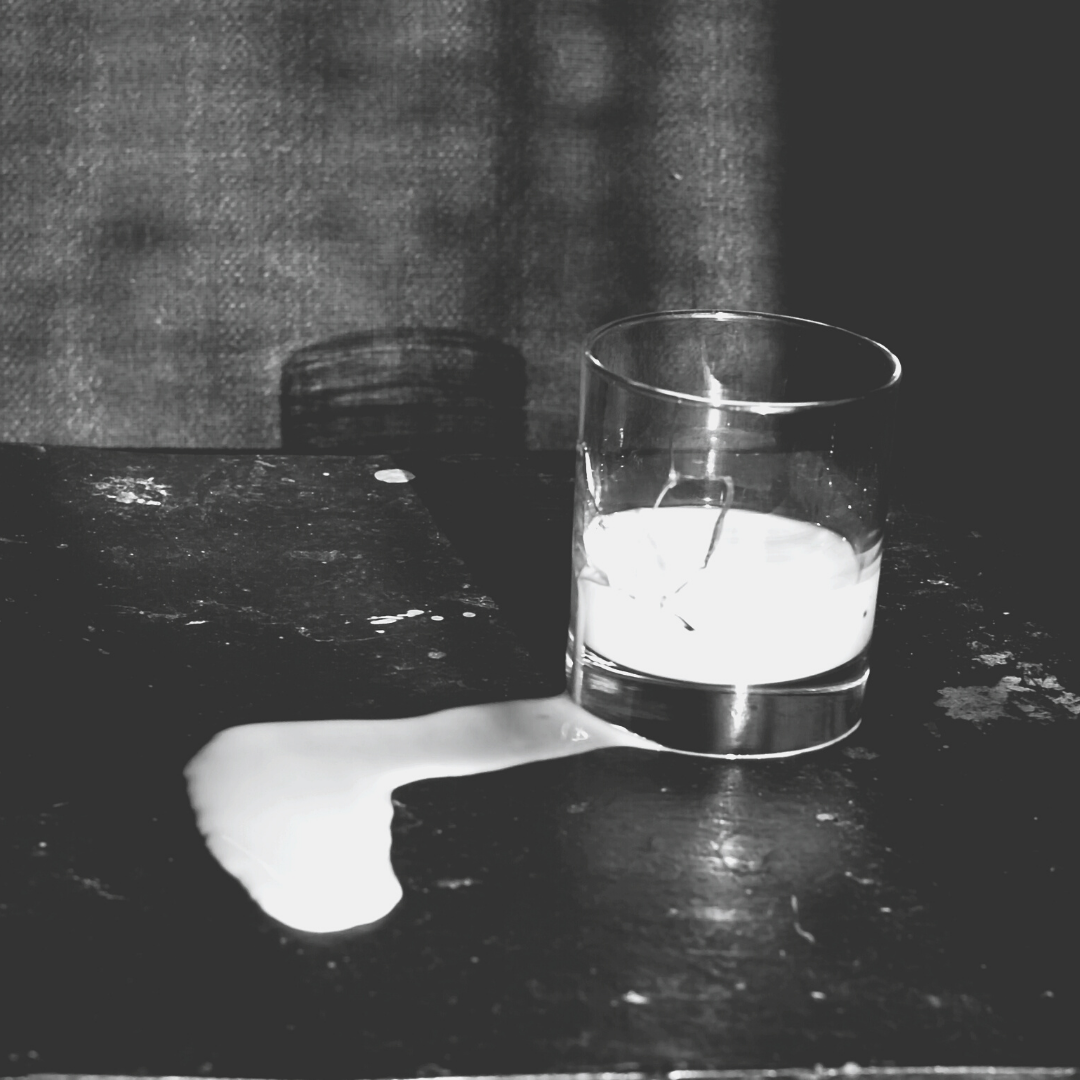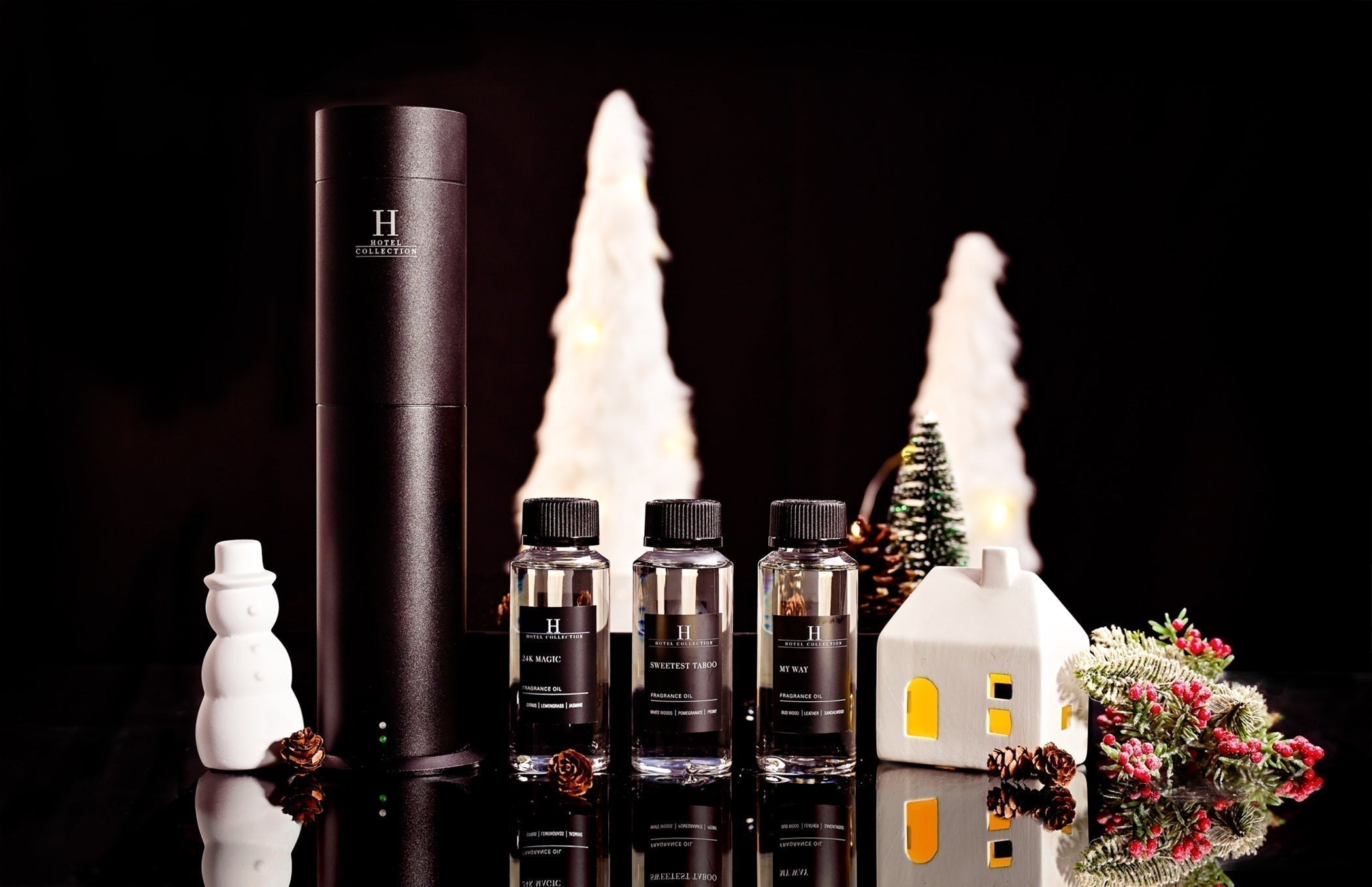Spilled candle wax can seem daunting to clean. Below are the best tools & tricks for an easy clean-up no matter the surface.
Glass, Metal, & Wood:
- Start by heating up the wax with a hairdryer approximately 6-inches away from the wax. You don’t want to heat the wood and cause damage. If the material doesn’t begin to soften after one minute, move the dryer within 3 to 4 inches from the surface.
- Once it’s melted, blot up as much as you can using a dry soft cloth.
- For wood surfaces - Remove any remaining wax with a soft cloth soaked in a solution mix of 1/2 cup of white vinegar and one cup of water.
- For glass surfaces - Use a solvent-like window cleaner, rubbing alcohol, drain cleaner, bleach, or vinegar to dissolve the wax and separate it from the surface, making it easy to remove.
- Use a plastic putty knife to scrape up any excess wax. Make sure it's plastic, not metal so you don't have to worry about scratches.
- Repeat the process if necessary.
- Re-shine your surface by simply applying the proper furniture polish. For wood surfaces, make sure the polish you choose is meant for the type, color and finish of the wood.
Vinyl Flooring:
- Place several ice cubes inside a sandwich bag and place the bag on top of the wax. Let the bag of ice sit on the wax for at least five minutes.
- After 10 minutes, remove the ice bag and scrape the wax with your fingernail. If you can’t scrape the wax off with your fingernail, try using a credit card, plastic knife, or plastic spoon.
- If the ice doesn’t work, try using hot water. Soak the spot in hot water for 5 minutes.
- Simply wipe away the wax with a dry cloth. You will likely need to repeat this process several times.
- Some residue may remain after cleaning. If so, directly apply a dab of Goof Off residue remover to the wax stain.
- Allow 2 minutes to penetrate.
- Wipe off with a dry soft cloth.
Granite & Marble:
Warning: Being prompt with this cleaning process is very important. Failure to remove wax immediately can result in a stained countertop due to the porous nature of granite.
- Place several ice cubes inside a sandwich bag and place the bag on top of the wax. Let the bag of ice sit on the wax for at least five minutes.
- Try to chip off the remaining wax using your fingernail, a credit card, plastic knife, or plastic spoon.
- You may notice that the wax is coming off in small layers. Repeat the process until the majority of the wax is removed.
- Lightly brush away the loose flakes with a paper towel. Make sure you are using light strokes. You don’t want to accidentally rub the wax into the surface since granite and marble are porous and will absorb liquids over time causing damage to its appearance.
- Apply a commercial granite or marble cleaner and wipe in a circular motion with a soft dry cloth. These cleaners help keep your countertops looking polished and fresh. The products also ensure that any oily residue that is left behind is promptly removed.
- Buff surface back to its original shine.
Upholstery:
Transferring wax to a different surface is a tried and true method for getting the substance out of linen and fabric. We’re focused on furniture but this remains true for clothing and other fabric-based materials.
Warning: Use only white cloths or paper towels when removing wax from fabrics, otherwise the dye may transfer and stain your furniture.
- Place several ice cubes inside a sandwich bag and place the bag on top of the wax. Let the bag of ice sit on the wax for at least five minutes. This encourages rapid solidification and prevents the wax from soaking into the fabric.
- Flake the wax off of the upholstery with a dull knife, such as a butter knife.
- Place a paper bag or some white paper towels on top of the wax stain.
- Gently iron the stain with a warm iron, changing the paper when the wax transfers to the paper. Warning: Paper can catch on fire so please be careful and don’t allow the iron to remain in one place while moving back and forth over the top paper bag.
- Blot the area with rubbing alcohol to remove any remaining residue.
- Buff off any remaining wax with a paper towel.
- You may need to repeat this process several times depending on how long the wax has remained in place and the type of fabric it has adhered to.
- You may notice some color stains caused by the wax. Use denatured alcohol to treat those wax stains. Warning: Please test the product in an inconspicuous area to ensure it works as directed without causing damage to your furniture.
Leather:
Warning: Avoid using abrasive methods to remove the wax, such as a scrub pad, as this may damage the leather. Use only white, non-printed cloths or paper towels when removing wax from leather so that the dye does not transfer onto the leather and stain.
- Wipe away any soft or melted wax with paper towels. Start at the lower edges to prevent it from spreading. Wipe from the edges of the spill inwards to prevent it from spreading as well.
- Place several ice cubes inside a sandwich bag and place the bag on top of the wax. Let the bag of ice sit on the wax for at least five minutes. This encourages rapid solidification and prevents the wax from soaking into the leather.
- Gently scrape the wax off.
- If any stain remains, mix a thick paste of fuller's earth with water and apply it to the stain. Allow the paste to dry, then carefully brush it off with a soft-bristled brush or toothbrush.
- Leather looking dull after you cleaned it? Use a leather conditioner once the process is finished to add hydration and shine back to your leather.
Carpet & Rugs:
Warning: Avoid using abrasive methods to remove the wax, such as a scrub pad, as this may damage the fabric. Use only white cloths when removing wax, so that the dye does not transfer onto the fabric and stain.
- Start by using the butter knife to gently scrape at the top layer of wax. The goal here isn’t to remove all of the wax attached to the carpet, instead, you want to remove the top layer. Be careful, some carpets have a tendency to come un-looped when pulled on.
- Once you have removed most of the wax from the top layer, you can place a pair of scissors along the floor line and snip any little pieces of fuzz that have resulted from removing the top layer of wax.
- Next, we want to create enough heat to loosen the remaining wax. Place a dry cloth over the surface.
- Apply medium heat with a clothes iron to heat through the cloth into the carpet and adhere any wax to the cloth.
- Do not attempt to heat the wax directly which may ruin your iron and cause the carpet to burn. Once the wax is sufficiently heated, use the same cloth to blot up the remaining wax.
- Use rubbing alcohol on a clean dry cloth to remove any residue.
- You may notice that the wax has caused some discoloration. You can remove the wax stain by applying a heavy-duty carpet stain remover. Warning: Please test the product in an inconspicuous area to ensure it works as directed without causing damage to your carpet.
Clothes & Fabrics:
Warning: Use only white cloths or paper towels when removing wax from fabrics, otherwise the dye may transfer and stain your clothes.
- Start by placing the garment in the freezer for 30 minutes to freeze the wax. This encourages rapid solidification and prevents the wax from soaking into the fabric.
- Remove the clothing from the freezer and snap off the frozen wax by rustling the fabric and shaking it off.
- The remaining wax can be removed by placing white paper towels on either side of the fabric. Turn your iron on low and make sure the steam setting is turned off. Move the iron over the paper towel, moving swiftly over the fabric while not staying in one place for too long. The paper towel should pick up any remaining wax.
- After completing this process, an oil spot may remain where the wax was removed. Pre-treat your clothing with Tide Ultra Stain Release Liquid.
- Rub the liquid into the garment gently using a soft-bristled toothbrush.
- Allow the liquid to sit for five minutes.
- Clean the garment with other fabrics in a normal load using hot water.
Related: Prevent candle accidents with these 20 Tips.






















